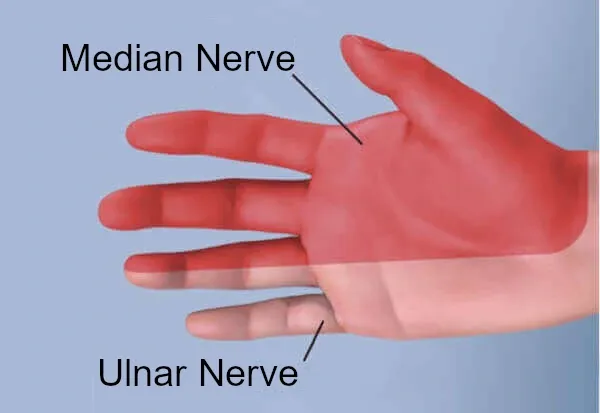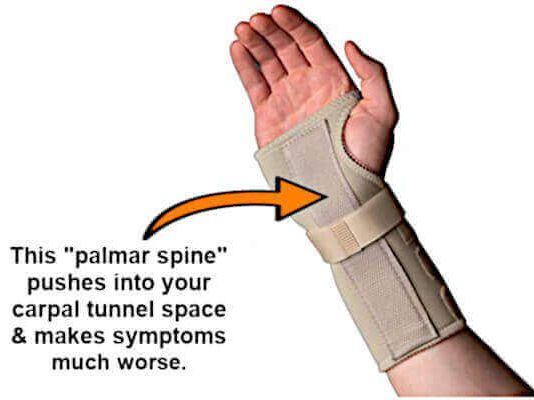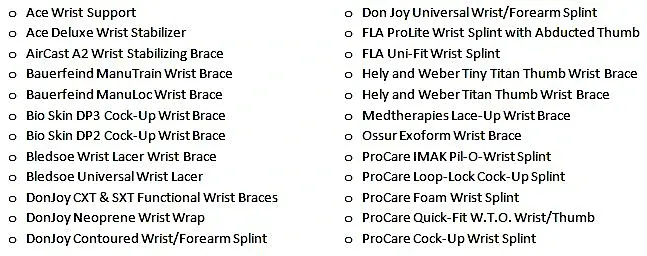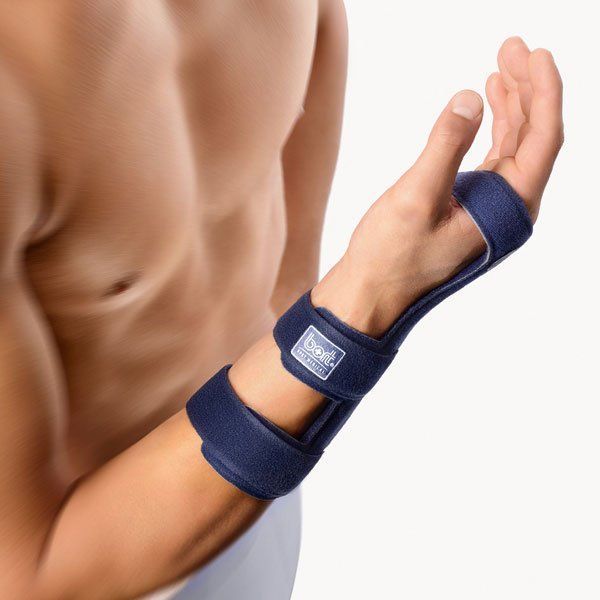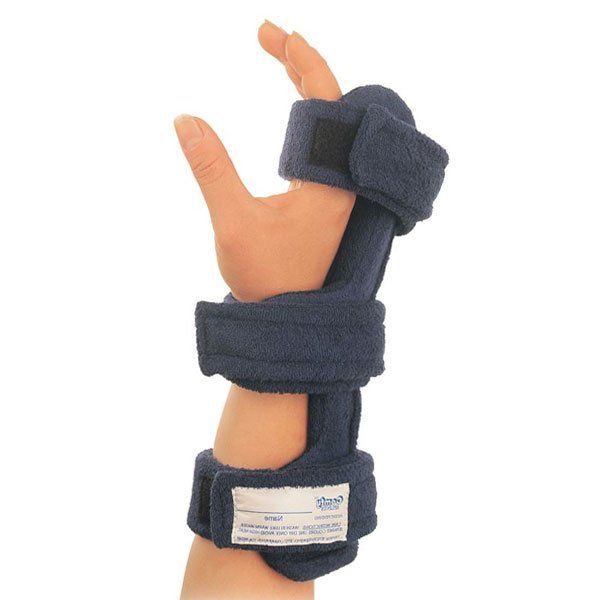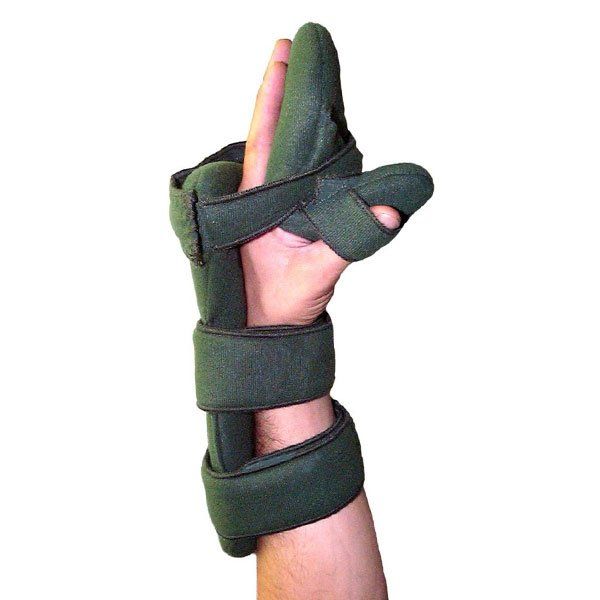How to Choose a Wrist Splint for Carpal Tunnel
A proper wrist splint for carpal tunnel keeps the wrist neutral at night, prevents nerve compression, and reduces numbness and tingling.
A wrist splint for carpal tunnel is designed to hold the wrist in a neutral position, preventing it from bending and compressing the median nerve. Wearing the right splint at night reduces numbness, tingling, and morning pain. Choosing a certified design—not a generic pharmacy brace—provides the best results.
People Also Ask
Does a wrist splint really help carpal tunnel?
Yes. A wrist splint keeps the wrist in a straight, neutral position, reducing pressure on the median nerve. This helps relieve nighttime numbness, tingling, and early-morning pain.
Should I wear a wrist splint during the day?
Most people only need a splint at night, when the wrist naturally bends during sleep. Daytime splinting is optional and may help if your work involves repetitive or stressful wrist movements.
What kind of wrist splint is best for carpal tunnel?
A certified carpal tunnel splint with no rigid palm spine is ideal. It should hold the wrist neutral without compressing the palm or restricting circulation.
Can a wrist splint make carpal tunnel worse?
Yes—if it has a palm spine, is too tight, or forces the wrist into flexion or extension. Incorrect splints can increase nerve pressure and worsen symptoms.
How long should I wear a wrist splint to see results?
Most people notice improvement within several nights, and more consistent relief after 2–4 weeks. Splinting works best when combined with daily therapy and activity modification.
Table of Contents
- Overview
- First, are you sure you have carpal tunnel syndrome?
- Symptoms of carpal tunnel syndrome
- 2 rules for wearing a wrist splint for carpal tunnel
- Rule 1: Only wear a certified carpal tunnel wrist splint
- Rule 2: Only wear the wrist splint at night, never during the daytime
- What's so bad about drugstore splints?
- Wrist splints to avoid
- Certified wrist splints for carpal tunnel syndrome
- Summary
- FAQs
- About
Overview
Choosing the wrong wrist splint for carpal tunnel syndrome can actually make your condition worse. For instance, do you wear a splint at night but wake up with intense symptoms in your fingers and hand? If so, chances are you're wearing the
wrong splint for this condition.
This article shows you what to look for in a wrist splint in order to properly treat carpal tunnel syndrome. Just as importantly, it shows you which wrist splints to
avoid. The best and worst wrist splints for carpal tunnel are listed below.
First, are you
sure
you have carpal tunnel syndrome?
Wearing a wrist splint for carpal tunnel syndrome at night (called "nocturnal wrist splinting") is one of the best ways to treat this condition. But before you waste time and money treating carpal tunnel, make sure you have this progressive condition in the first place. Here are the symptoms you should have.
Symptoms of carpal tunnel syndrome
Carpal tunnel syndrome has very specific
symptoms. In fact, you can perform this
simple self-test which doctors use to determine if you have it.
The symptoms of carpal tunnel syndrome occur ONLY where the
median nerve distributes to the hand. The image (above) illustrates where on the hand the median nerve provides sensation.
Carpal tunnel syndrome is all about
abnormal sensations from the median nerve. The most common carpal tunnel sensations you feel from this area of the hand and fingers are:
Weakness and clumsiness are more advanced symptoms. If you find it difficult to tie a shoelace, button a shirt, pick up coins, or drop things, then your disorder has progressed beyond the
mild stage.
Symptoms usually first appear while trying to sleep. In fact, this differentiates carpal tunnel syndrome from
wrist tendonitis. In its beginning stages, wrist tendonitis usually is painful when your hand is
working. In contrast, carpal tunnel syndrome starts off showing symptoms while your hand is
resting.
2 rules for wearing a wrist splint for carpal tunnel
If you have carpal tunnel syndrome, it means you don't have an ordinary hand problem, like a sprain. Therefore, you must treat it in a special way when it comes to splinting. The following are the 2 rules for wearing a wrist splint if you have carpal tunnel syndrome.
Rule 1: Only wear a certified carpal tunnel wrist splint
A
certified
carpal tunnel wrist splint means it is specific for treating
this
condition. Also,
orthopedic doctors have approved them for wearing when you have carpal tunnel syndrome.
Drug stores like CVS, Walmart, Rite Aid, or Walgreens do not stock certified carpal tunnel wrist splints. They can only be purchased from approved online suppliers (see list below).
What makes it a "certified" wrist splint for carpal tunnel?
These splints are designed ONLY for carpal tunnel syndrome. That means:
- They do not contain a palmar spine (the flat metal stabilizer on the palm side of the splint).
- They stabilize the wrist with a "lateral" or "dorsal" spine.
Rule 2: Only wear the wrist splint at night, never during the daytime
A wrist splint for carpal tunnel syndrome should only be worn at night, when you're sleeping. You should
never
wear one during the daytime.
The reason is because of the way carpal tunnel syndrome occurs. It begins due to stressed tendons in your wrist joint. The stress usually results from repetitively straining your fingers and hand. This causes irritation and (in time) swelling along he tendon. That tendon swelling is what causes the abnormal problems with your median nerve - and the symptoms of carpal tunnel syndrome.
So performing your regular hand and finger activities during the daytime is stress enough. But if you also restrict your hand's movement, it doubles the work your hand has to do to overcome the restriction. That's even more hand stress, which adds to the tendon problems you already have
What's so bad about drugstore splints?
Wrist splints to avoid
The most popular splints people (wrongly) use for carpal tunnel syndrome are listed below. These are NOT designed for carpal tunnel syndrome and should be avoided. Using them can cause more harm if you have this disorder.
Certified
wrist splints for carpal tunnel syndrome
The splints listed below are the only ones (known as of this date) to be certified for carpal tunnel syndrome. That means they're designed to treat carpal tunnel, and nothing else. Their approximate prices (high to low) may vary.
For full disclosure, this author (Dr. Z) designed and invented the CarpalRx product below.
Summary
Wearing a
certified
wrist splint for carpal tunnel syndrome is a good first step toward treating this condition. Being careful to avoid what caused the problem (like repetitive hand stress) and wearing the splint at night will make mild cases of carpal tunnel disappear within a few weeks.
Avoid wearing a wrist splint during the daytime. This only stresses your wrist more. And at all costs, avoid using drug store splints. They are not designed to treat carpal tunnel syndrome and can actually make your condition worse.
If your carpal tunnel symptoms are more
severe, simple night splinting will not be enough. You must combine it with
specific carpal tunnel
stretching exercises and
myofascial release massage in order to see symptoms resolve.
FAQs
So absolutely no pharmacy sells a certified splint?
That's correct. They are only found online.
Why do pharmacies sell splints labelled "great for carpal tunnel"?
Unfortunately, that's illegal and even potentially harmful. The FDA has little control over the labels of generic splints. Consequently, the splint manufacturer can take their standard splint and add "for carpal tunnel" to the label, hoping you but it.
How can reputable pharmacies sell splints that are not made for carpal tunnel?
This is a huge problem that is only now becoming heard. With gigantic profits to be made from splints, big pharmacy chains are slow to make changes to such money making product lines.
About


